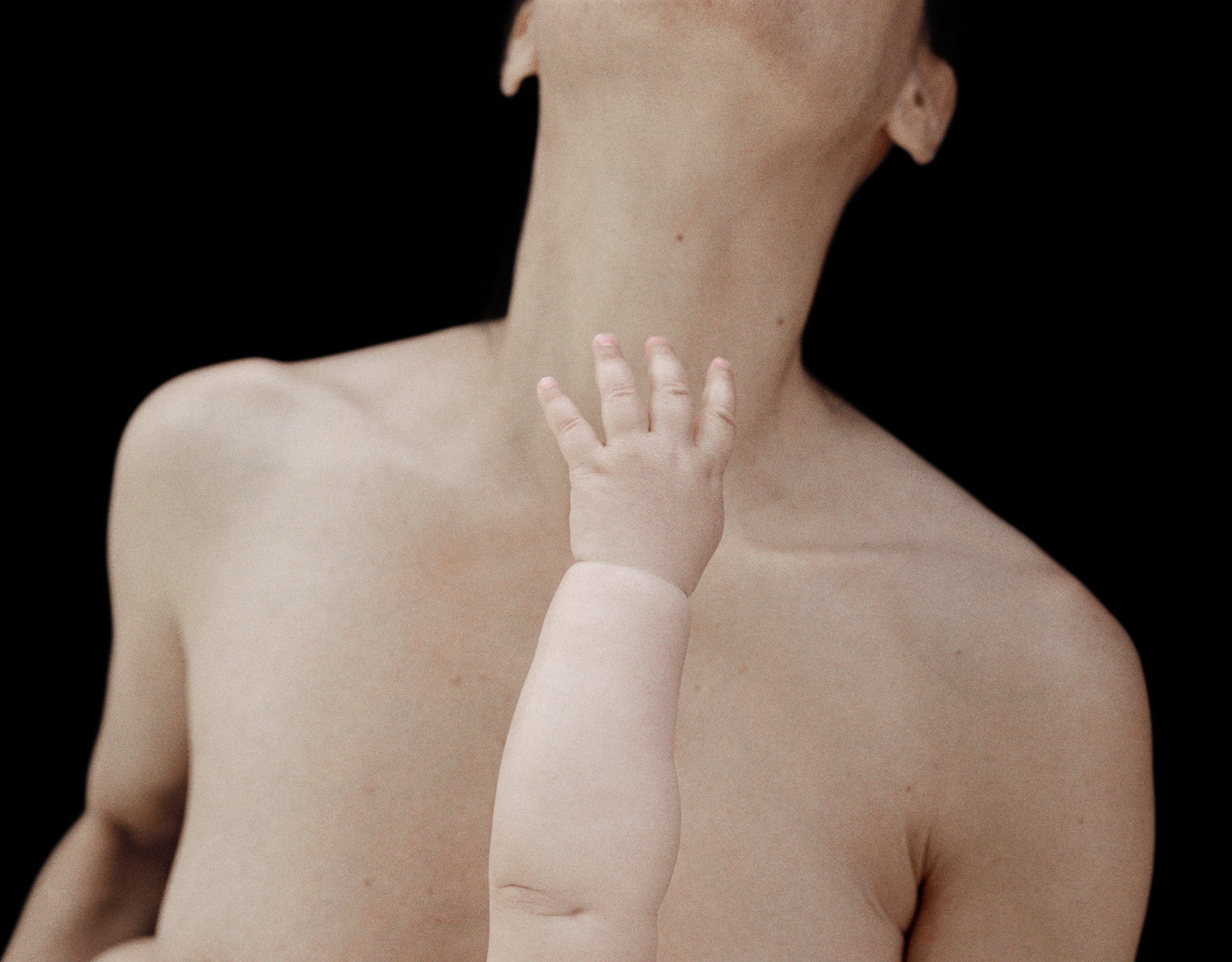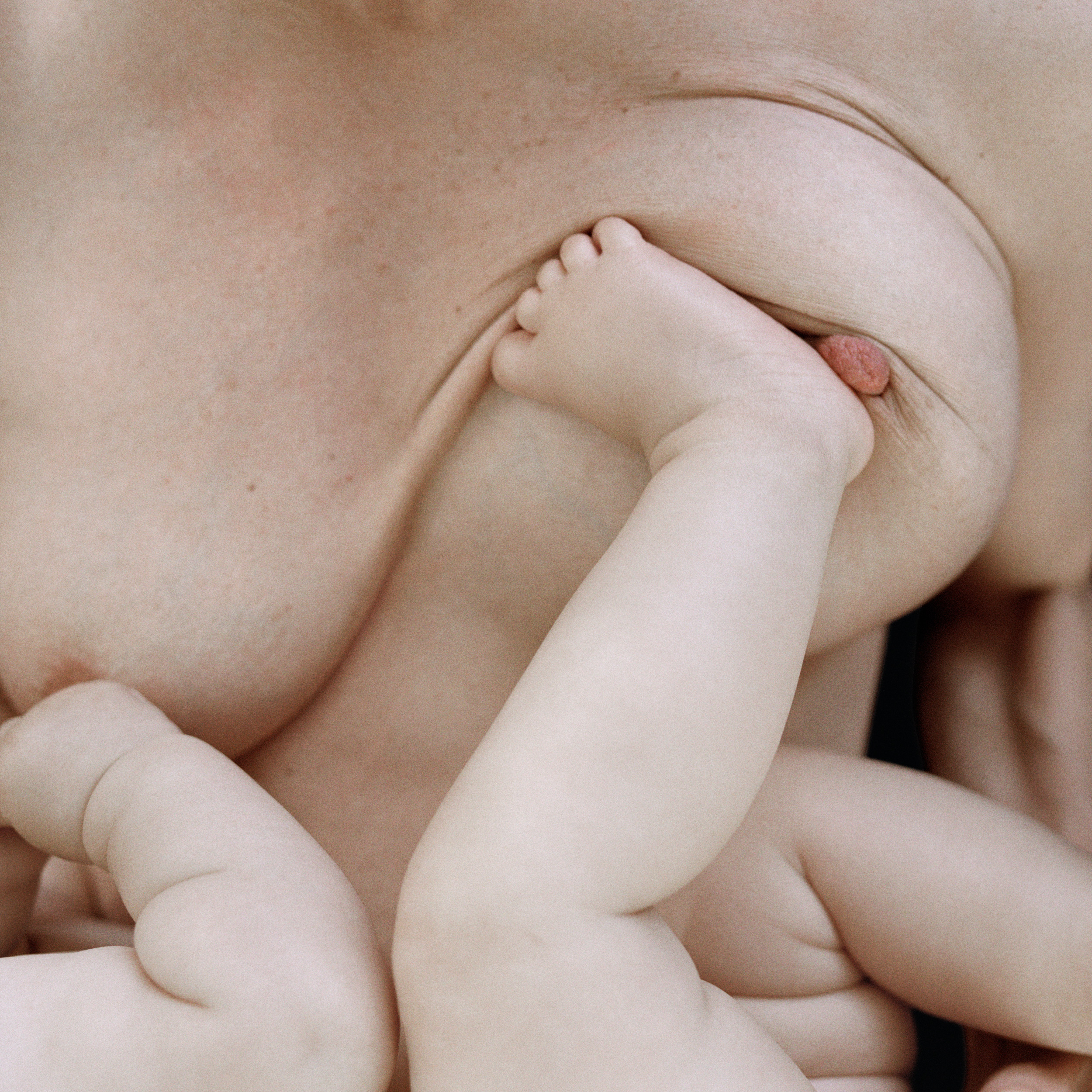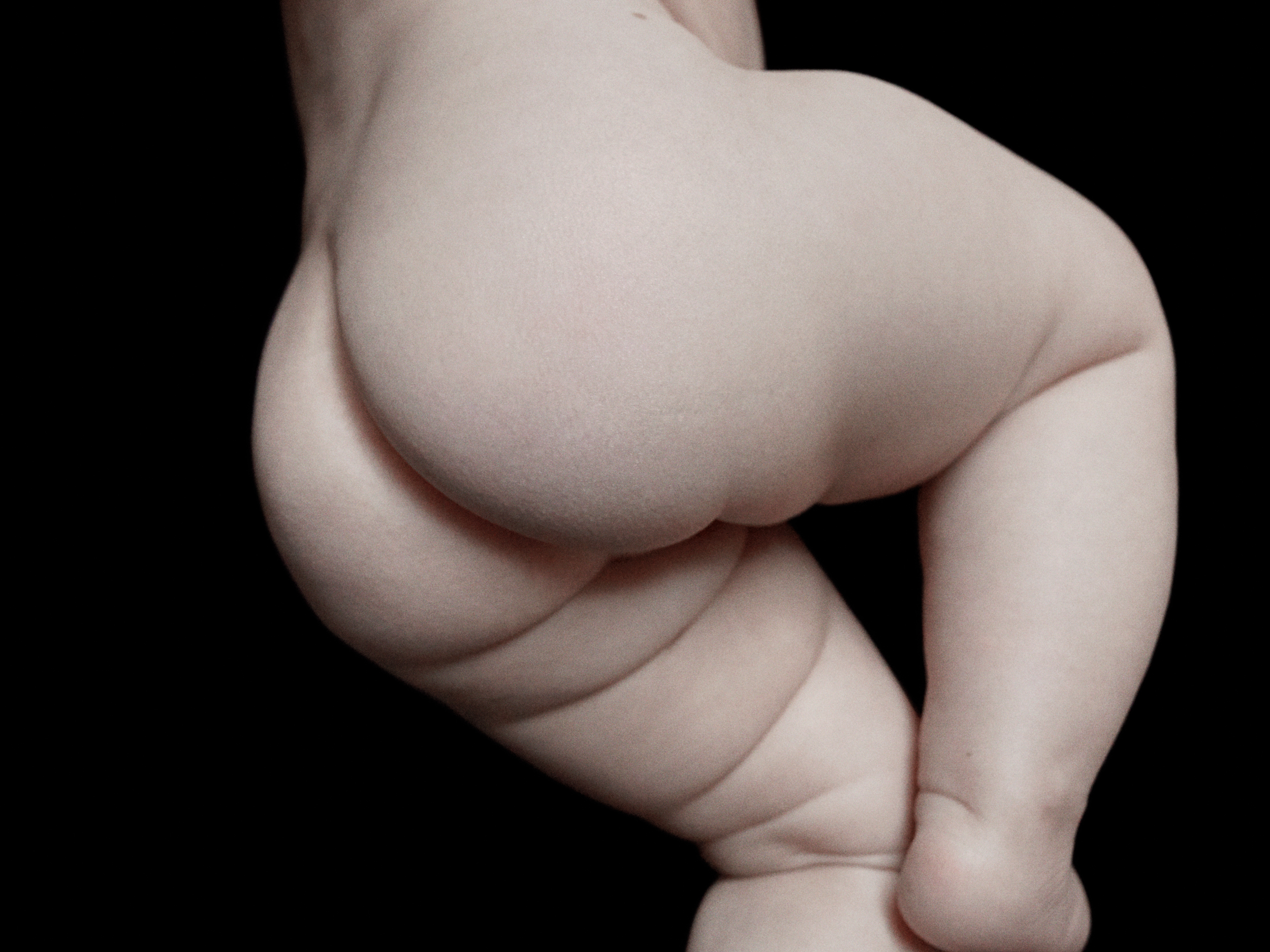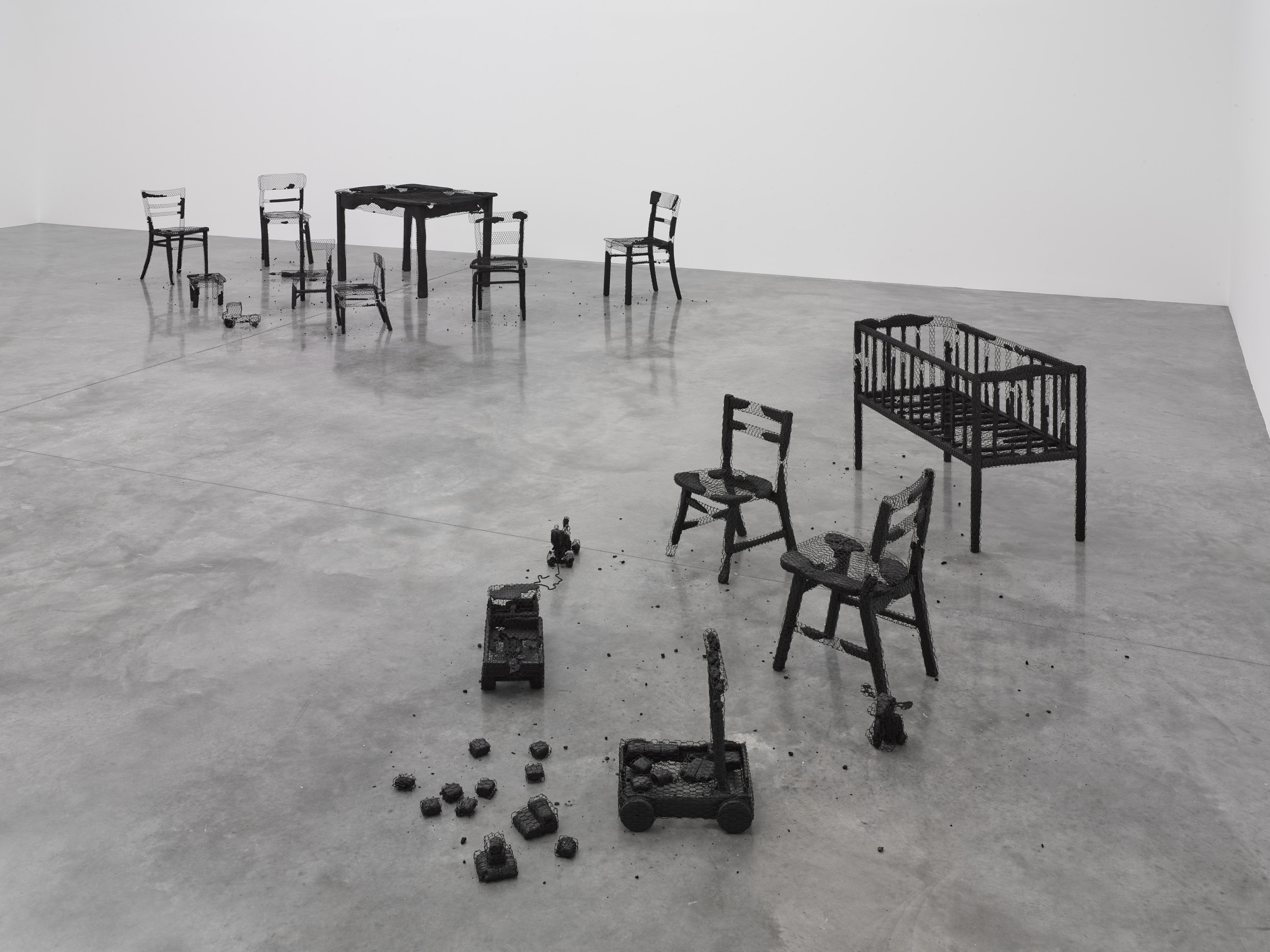
There are days in parenthood when you wake up and just don’t feel like being a parent. For example, the other morning, as I refused to wake up when my daughter clambered all over us, I heard a sheepish “uh oh”. Still not stirring from semi-slumber, I suddenly felt something being smeared across my face. I understood instantly, horrifyingly what it was. Jumping out of bed, screaming “I’ve got shit on my face!”, I shook my boyfriend from dozing only to find he had also been taken down. “Me too!” he yelled back as I ran to the bathroom, faeces-brandishing child tucked under one arm. It was not the best start to the day I’ve had.
Sophie Ebrard presented her series I Didn’t Want to be a Mum during annual photography festival Unseen at her house in Amsterdam. The setting for the show was suitably intimate for the subject: an honest account of Ebrard’s struggles in accepting her identity as a mother. Through photographs, diary entries and video, the sounds of a woman giving birth and even the bottled smell of a newborn’s head, Ebrard talks openly about the shame she felt around her own feelings towards becoming a mother; the seismic shift that took place almost overnight when she gave birth—describing it as something of a “slap in the face.”

Many women are afraid to admit when they don’t instantly love their child; they’re scared of themselves, as much as other people’s reactions, when they don’t fully embrace motherhood. I remember in the fuzzy first few weeks postpartum that I felt more compelled by instinct to care for my newborn daughter, rather than experiencing the immediate ‘rush of love’ so many parents talk about. Watching other parents perform parenthood with their children in the park, I wonder how many parents still feel uncertain in their roles. Living with a small person whose personality changes and evolves every week is complicated.
We believe that as soon as you become a mother, you feel it in totality. The brutal truth—as Ebrard captures it—is that becoming a mother takes time. It has to be learned and refined like anything else. It might even take the entirety of your child’s life to get any good at it and, even then, you’ll still make mistakes. As I recall one friend saying, when her daughter was six years old, “She’ll either complain that you loved her too much, too little, or just the right amount.”
You can’t possibly be prepared for all of the unpredictable situations a new life will bring into yours, or know how to deal with them. Mothers to older children have their own cohort since they deal with a daily existence that’s completely different to that of mothers of toddlers. Motherhood isn’t something that is fixed and definite—which is why it’s so strange that visual culture has set its image within such a narrow frame. Mothers to teenagers often smile wistfully at me as I try to keep up with my errant tiny perambulator, or say how much they miss “that time” when your child needs you so much, and their character is still locating form in language and gesture. “Then they grow up and they hate you and never talk to you,” said one mum we once met on the street. It makes you feel that some hideous beast is lurking in that small vulnerable body.
“The motherhood experience isn’t taken seriously as an intellectual, as well as aesthetic and psychological, perspective in art”

Now that I’m pregnant with my second child, I’m still not sure what being a mother really means, or whether I want to be one. This is a situation many artists deal with; there’s a lot of self-censorship around the work that women artists make about their own pregnancies, miscarriages, IVF treatments, abortions and births; not wanting to be defined by the idea of motherhood. The British artist Anne Morris, whose exhibition at Timothy Taylor New York closes this month, became obsessed with the rotund shape of pregnancy after she had a stillbirth; her colourful, towers of spheres hint are deeply moving when you consider this is one of her references. It’s downplayed when the work is written about—though it’s unclear if that is Morris’ choice—and the sculptures are no way near as celebrated as comparable works, such as Ugo Rondidone’s rainbow stone stacks. The motherhood experience isn’t taken seriously as an intellectual, as well as aesthetic and psychological, perspective in art.
As hundreds of breastfeeding mothers staged a mass protest in Westminster last week for Extinction Rebellion, it was a reminder of motherhood’s inherent political power; yet we are often pushed to the peripheries, out of jobs, out of the public, into the domestic, the safe, protected and lonely interiors of our homes. This public gathering of mothers was not only a protest about the future generation they are raising, who will be most gravely impacted by the climate crisis, but a statement about a mother’s place in shaping society, and a demand to be seen as the frontline, the bloodline, the lifeline of our society.

That power is, of course, ambivalent. While we need to know that motherhood means more, it is also a heavy responsibility. Not far away from the protesting mothers in Parliament Square, in the courtyard of the Royal Academy, lies Anthony Gormley’s tiny Iron Baby (1999), deserted and alone, a trip hazard curled in a closed pose. It is a reminder of the precariousness of our planetary future, something we easily overlook. Across the Thames, at White Cube, Mona Hatoum’s Remains of the Day (2016-2018), is an arrangement of charred children’s furniture, scorched by human destruction, made in response to Hiroshima (the artist conceived the project for the tenth Hiroshima Art Prize exhibition). Children symbolise innocence, family—the nucleus of home. Hatoum’s ensemble, as she puts it, “appear like shadows of the solid objects they once were, locating the idea of ‘home’ not as a place of refuge and established order but as a site of upheaval, disorder and the uncanny.”





